Different components of the mission are being looked after by different implementing agencies independently, Altaf Andrabi..
What could have brought revolution in the production of saffron and its trade, has, however, completely failed in its all aspects, thanks to the poor planning of the politically influenced bureaucracy.
Almost a decade ago, saffron cultivation in Kashmir valley was under the threat of extinction. Saffron growers were fast shifting towards other profitable ventures like establishing of apple orchards, real-estates etc. The area under Saffron cultivation declined from 5707 ha in 1996 to just 3715 ha in 2009-10. It was then the Dr. Manmohan Singh-led Congress government at centre sanctioned Rs. 400 crore project for revival of saffron production in the J&K state and the programme was finally launched amid much fanfare during 2010 initially for a period of 4 years, but the time line was later extended.
Bhartiya Janta Party then in opposition had criticised the project, but when they came in power they began to support it.
Now we are eight years down the line in implementation of the ambitious Rs.400 crore National Saffron Mission, have already got two extensions in time line for completing the project and have spent more than 300 crores of rupees, but unfortunately we have gone from bad to worst given the present deserted look exhibited by the saffron fields at a time when the fields should have been laced with the pleasant bloom of worlds costliest spice the saffron. What went wrong and why the mission failed in achieving the goal is a million dollar question to which this reporter tried to get answer from various implementing officers, politicians and the poor farmers who are the ultimate sufferers.
Nissar Ahmad a much worried and upset farmer had a lot of praise for the project, but he curses all the officers responsible for its implementation. He says it was a sound and wonderful project for the saffron growers and definitely could have brought a revolution in the production of saffron, had the implementing agency worked strategically. He says the mission has failed completely and blames the implementing officers for failure of the mission. He said eight years have passed since the launch of the mission, but we have not been able to start sprinkler irrigation which was a major and most important component of the mission. He further said there is no accountability for the government officers and they act like kings; had they been accountable, the mission would have achieved success. Now in this fast changing economic world, I can no longer remain stick to saffron cultivation, I will shift to some other profitable venture, said Nissar Ahmad appealing the Chief Minister to initiate enquiry into the failure of the mission to fix the responsibility against the responsible officers.
Another saffron grower and former Sarpanch from ruling PDP, Mohammad Usman Itoo from Nagam Chadoora rued that no efforts are being made by Agriculture department for establishing bore-wells and sprinkler irrigation system despite the fact that Rs.5300 per kanal have been kept withheld by the department since 2013-14. The withheld money he said is lying in the bank account of SDAO Chadoora, who wants the directions from Minister for Agriculture for release of withheld money. Neither we are being provided sprinkler irrigation nor being paid the withheld money. We apprised the concerned minister several times, but he fails to understand our vows. SDAO Chadoora Tabina Altaf confirmed that the money is lying in her official account and said she cannot disburse it without the approval of superiors.
Chief Agriculture Officer Pulwama Amir-din Andrabi accepted that sprinkler irrigation system in saffron fields is yet to start and said that he was surprised as someone during the yesterday’s meeting mislead the Minister for Agriculture Gh. Nabi Hanjura by falsely announcing that three bore-wells were functional when in fact none is. He also acknowledged the fact that the mission has failed to revive the crop.
Asked about the rejuvenation targets and achievements made during 2017-18, he said against a target of about 1510 ha, a meagre 157 ha has been achieved. The chief Agriculture Officer blamed the low achievement under rejuvenation to non-availability of corms.
However, Mission Director Altaf Aijaz Andrabi put the achievement made under rejuvenation at 160 ha. He said valley has not received any rains from the last three months and that has drastically affected the rejuvenation component. When asked about failure of the department in establishing the sprinkler irrigation system, a major and main component of the mission, he said that different components of the mission are being implemented by different agencies and the irrigation part is being looked after by the Mechanical Engineering Department independently. They are not working under the control of Mission Director, National Saffron Mission, Andrabi further said.
Asked what technology you brought from recent European visit for saffron growers, Andrabi told this reporter to ask this question to Minister for Agriculture Gh. Nabi Hanjura who was heading the delegation on abroad tour. Minister for Agriculture Gh Nabi Lone Hanjura could not be contacted for comments despite several attempts.
Minister of State for Cooperative and Environment Zahoor Mir when asked what have they observed during the yesterdays visit of saffron fields said that Saffron Mission has badly failed to revive the legendary crop and added that agriculture department as well as the mechanical engineering departments have miserably failed in implementing the mission.
Bottom line:
No sprinkler system of irrigation started yet, out of the total mission target of 3715 ha, almost 1400 ha yet to be rejuvenated, the ever decreasing saffron production with 2017-18 predicted to record the lowest ever yield speaks the failure of the ambitious Rs.400 crore mission.
The poor planning, lack of managerial set-up to supervise the programme activities, political influence and above all the important one no-accountability of officers involved in implementation are some of the factors responsible for failure of the mission, otherwise with this huge amount in hand one could have established computerised moisture sensors in the saffron fields that could keep track of what is going on in the soil, the results of which are passed to the farm’s irrigation system which ensures delivery of precise sprinkling.







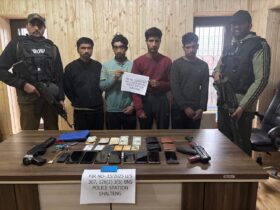

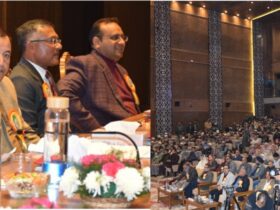

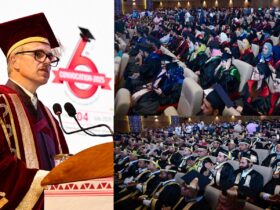


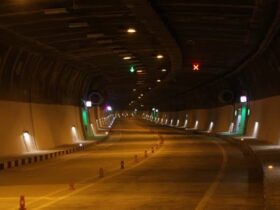

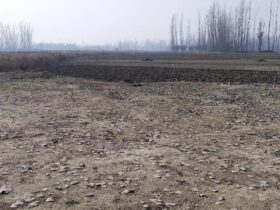
Leave a Reply